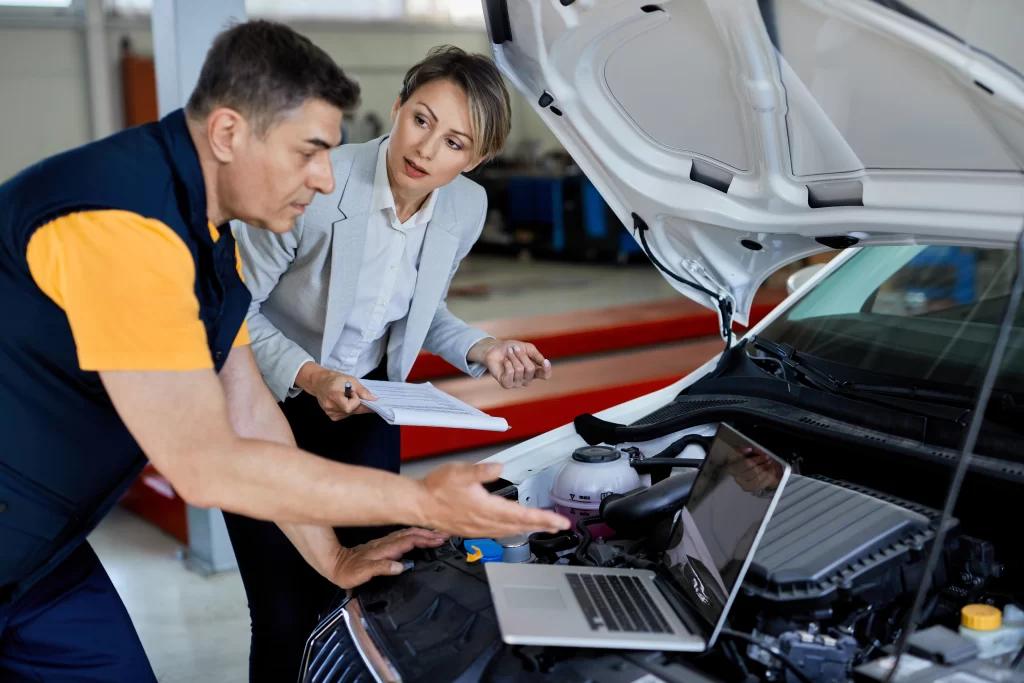Introduction

Advanced Driver Assistance Systems (ADAS) are one example of a technological advancement in automotive technology that has led to the installation of more advanced features in automobiles. ADAS calibration is a vital component of ensuring these systems work optimally, additionally contributing to safety but also having a substantial impact on numerous aspects of vehicle performance. In this talk, we will look at 15 significant impacts of ADAS calibration on vehicle performance, spanning from improved safety to better handling, stability, and driver comfort.
15 Crucial Effects of ADAS Calibration on Vehicle Performance
Your vehicle needs ADAS calibration after windshield replacement and repair. And keeping in mind your safety and the performance of your vehicle, the following are the 15 crucial impacts of ADAS calibration on your vehicle:.
Enhanced Safety and Collision Avoidance
One of the most obvious indicators of how seriously individuals have dedicated themselves to making cars safer is the Advanced Driver Assistance System (ADAS). By using cutting-edge technologies, cars can anticipate and prevent possible collisions. These systems use a combination of sensors, cameras, and radar to monitor the area around the vehicle, enabling prompt and accurate actions to reduce or prevent accidents. Because driving involves assessing hazards continuously and finding flexible solutions, safety is the priority.
Accurate Sensor Data for Optimal Performance:
The fundamental aspect of ADAS is its dependence on precise sensor data to achieve maximum efficiency. Sensor calibration, such as radar, lidar, and cameras, enables a continuous flow of information. This precision enables the vehicle’s onboard systems to precisely understand the surroundings, allowing adaptive reactions for optimal performance. The calibration of sensor data is critical to the cognitive decision-making processes that characterise modern vehicle technology, from identifying road conditions to anticipating future difficulties.
Improved Stability and Control during Lane Changes:
ADAS calibration is critical for improving stability and control during lane changes. These technologies boost driver confidence during manoeuvres by fine-tuning the reaction of stability control systems and incorporating data from sensors monitoring the vehicle’s dynamics. The calibrated systems react quickly to changes in direction, ensuring that the vehicle retains stability and control, resulting in a safer and more assured driving experience.
Precise Steering Input with Proper Lane-Keeping Assistance:
Calibration in ADAS is critical for providing precise steering input and effective lane-keeping assistance to drivers. Vehicles can provide accurate guiding within lanes by aligning sensors, cameras, and steering control algorithms. This calibration guarantees that the steering assistance responds to the driver’s intentions while remaining aligned. As a result, the driver and the vehicle work together in sync, improving both control and safety.
Efficient and Confident Maneuvering with Effective Parking Assistance:
ADAS calibration improves the efficiency and confidence of parking assistance. Vehicles equipped with ADAS traverse parking spaces with ease thanks to the rigorous tuning of sensors and automatic control systems. Calibration enhances the accuracy of distance measurements and the precision of steering inputs, allowing for efficient and confident manoeuvring in confined situations. That led to a parking assistance device that makes parking easier for the driver and makes their life easier in general.
Consistent Speed Control with Adaptive Cruise Control:
To get the best fuel economy and reliable speed control with Adaptive Cruise Control (ACC), calibration is essential. Vehicles can maintain a constant and adaptive speed by adjusting the ACC system’s reaction to local traffic circumstances. The calibration ensures that the ACC system achieves a balance between traffic-aware changes and fuel-efficient driving, offering drivers a smooth and efficient cruise control experience across a wide range of road conditions.
Improved Handling in Various Driving Conditions
ADAS calibration has an impact on adaptive lighting, improving vehicle handling in a variety of driving scenarios. Calibrated adaptive lighting systems improve visibility by precisely adjusting headlights based on factors including speed, steering input, and the surrounding lighting. As a result, the driver has better light where it’s needed, which improves handling and makes driving safer and more responsive.
Reduced Driver Fatigue through Minimized False Alarms:
Calibration in Advanced Driver Assistance Systems (ADAS) focuses on reducing false alarms, which is essential for addressing driver tiredness. Optimising the sensitivity of safety systems guarantees that alarms and interventions are activated solely in reaction to actual hazards. The careful adjustment of settings minimises needless disruptions, lessening the mental strain on the driver and promoting a calmer and more attentive driving experience, thereby reducing the likelihood of fatigue-related accidents.
Optimal Performance through Unified Sensor Fusion:
The foundation of ADAS is unified sensor fusion, in which information from multiple sensors combines to provide a comprehensive picture of the environment around the car. For this integration to function at its best, calibration is necessary. ADAS guarantees correct data fusion by fine-tuning the sensors and algorithms, empowering the system to make proficient choices that improve overall driving simplicity and safety. Precision calibration enables unified sensor fusion, which is a fundamental component of contemporary automobile intelligence.
Compliance with Performance Standards and Regulations:
When it comes to ADAS, calibration is key to meeting stringent performance standards and regulations. Vehicles employing ADAS technologies meet performance and safety standards by matching the system to industry-specific criteria. This calibration promotes standardised excellence throughout the automotive industry by assuring not only regulatory compliance but also improving the dependability and efficacy of safety measures.
Enhanced Pedestrian Detection for Safer Driving:
Calibration is critical in improving the effectiveness of ADAS pedestrian detection systems. These devices can recognize pedestrians in a variety of situations by fine-tuning sensors and algorithms. By enabling prompt warnings and responses, this calibrated awareness significantly decreases the likelihood of incidents involving pedestrians. As a result, traffic is safer, and ADAS technology, with its careful calibration, actively promotes pedestrian safety.
Smooth and Predictable Cruise Control Operation:
ADAS calibration guarantees that cruise control systems operate smoothly and predictably. Vehicles incorporating ADAS technology provide a reliable and responsive cruise control experience by optimizing the interactions between sensors, actuators, and control algorithms. This calibration enhances overall driver comfort and happiness by optimising speed adjustments, which helps to create a smooth driving experience with predictable cruise control.
Quick and Reliable Emergency Braking Response:
Careful ADAS calibration directly contributes to the emergency braking systems’ dependable and prompt response. Through fine-tuning sensors and algorithms, these systems are able to quickly identify impending crashes and apply brakes. This calibration improves the effectiveness of emergency braking, adding an extra layer of protection and reducing the severity of probable accidents. The end result is an increased level of protection for the people who are inside the vehicle as well as for other people who are on the road.
Improved Performance in Cross-Traffic Situations:
ADAS calibration considerably improves performance in cross-traffic scenarios. Automobiles with advanced driver assistance systems (ADAS) can handle cross-traffic situations and crossings with increased awareness and efficiency by optimising sensor sensitivity and response times. In urban driving contexts where cross-traffic situations are common, this calibration guarantees that the system can accurately read complicated traffic patterns, contributing to overall safety.
Enhances Overall Vehicle Dynamics
The end consequence of ADAS calibration work is improved overall dynamics of the vehicle. Through the intelligent synchronisation of many safety and support systems, automobiles provide a seamless and agile driving experience. This calibration makes sure that safety features work in unison with the inputs of the driver, fostering a pleasant driving environment that puts safety and driver satisfaction first.
Why Choose Speedy Windshield Repair for ADAS Calibration Services?
Speedy Windshield offers top-quality services, considering the specific requirements of its customers. Your safety is connected with ADAS, and we are one of the best choices in terms of quality and affordability. We are committed to meeting the expectations of our customers. As an experienced service provider, the quality of our services will be second to none.
Final Thoughts:
The calibration of advanced driver assistance systems in vehicles enhances performance and safety. Accurate sensor data ensures stability during lane changes and precise steering input. Parking assistance facilitates efficient manoeuvring, while adaptive cruise control improves speed control and fuel efficiency.
Speedy Windshield Repair offers top-notch services with an experienced team at highly affordable rates. Apart from ADAS calibration, we offer services like windshield repair and replacement, back window repair and replacement, autoglass replacement, and beyond.



